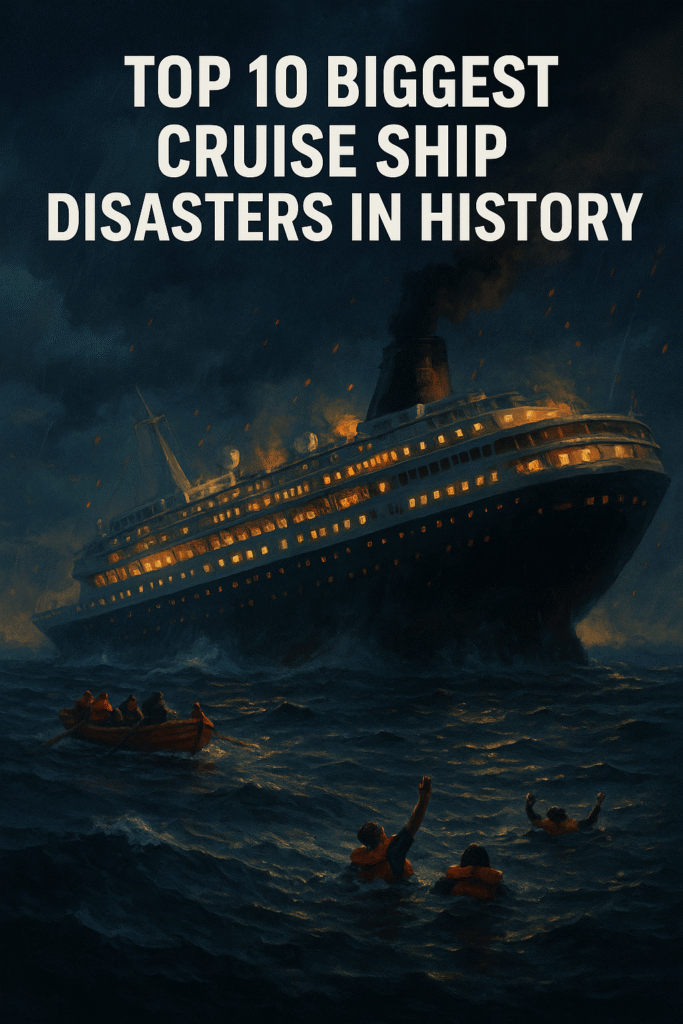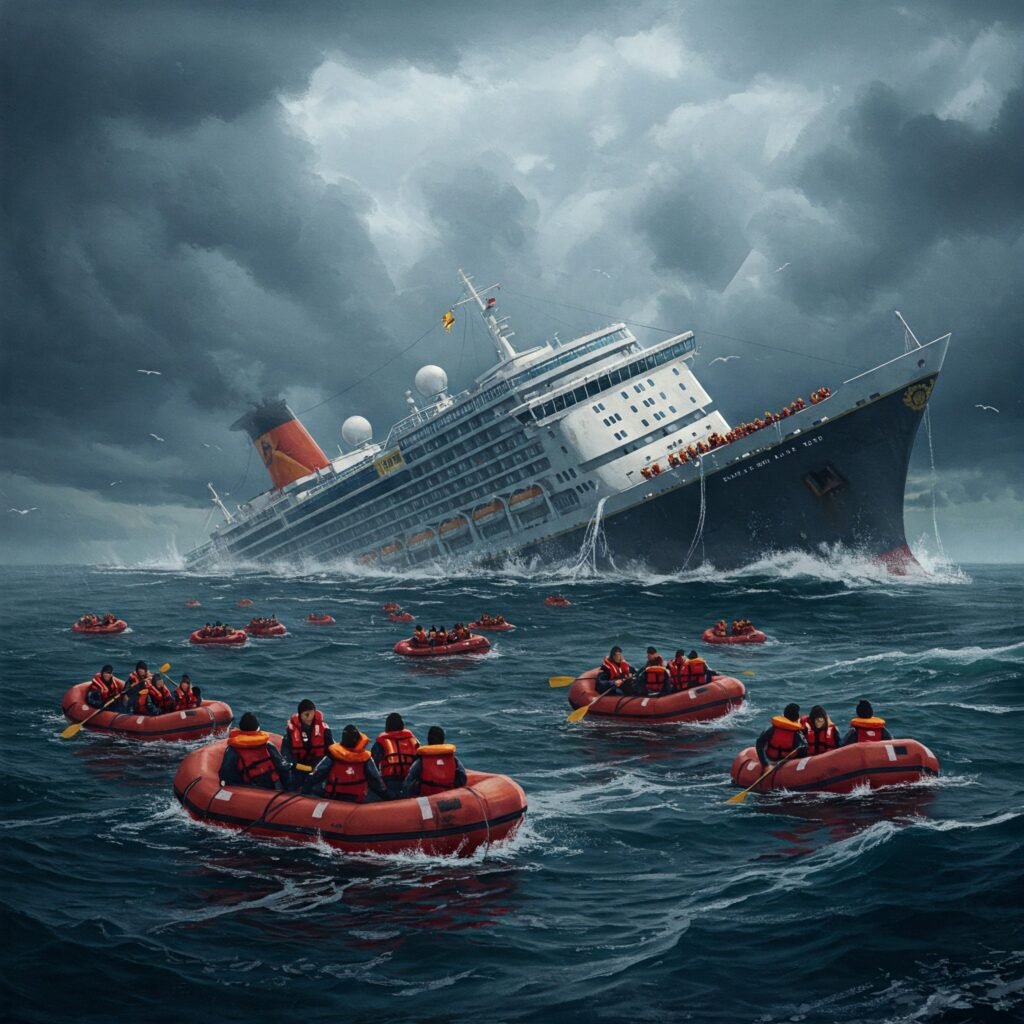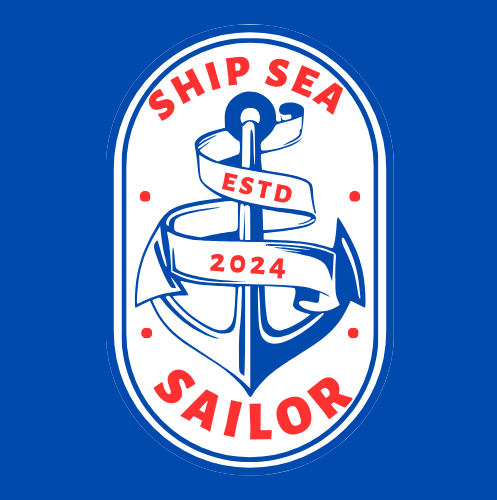Cruise ships are known for providing passengers with an unforgettable vacation experience, but the history of maritime travel also includes some of the most tragic and devastating cruise ship disasters. These events serve as sobering reminders of the risks involved in seafaring. Below, we explore the top 10 biggest cruise ship disasters in history, detailing each incident year by year and reflecting on their aftermath.

1. The Sinking of the Titanic (1912)
The RMS Titanic remains the most infamous cruise ship disaster in history, occurring on its maiden voyage from Southampton to New York City.
The Disaster
On the night of April 14, 1912, the Titanic collided with an iceberg. The impact caused the ship to flood and sink within two and a half hours. Over 1,500 people lost their lives due to the lack of lifeboats and the cold temperatures of the North Atlantic.
Aftermath
The Titanic disaster led to significant changes in maritime safety regulations, including the requirement for enough lifeboats for every passenger and the creation of the International Ice Patrol to monitor iceberg activity.
2. The Costa Concordia Disaster (2012)
On January 13, 2012, the Costa Concordia, a large Italian cruise ship, capsized off the coast of Italy after striking a rock near the island of Giglio.
The Disaster
The Costa Concordia was conducting a maneuver near the island when it struck a submerged rock, creating a massive hole in its hull. The ship eventually capsized, resulting in the deaths of 32 people. The ship’s captain, Francesco Schettino, was widely criticized for abandoning the ship during the crisis.
Aftermath
This disaster led to widespread changes in cruise ship evacuation protocols, including improvements in crew training, passenger safety measures, and emergency response systems. The incident also sparked international outrage over the captain’s actions.

3. The MS Estonia Disaster (1994)
The MS Estonia, a passenger ferry and cruise ship, sank in the Baltic Sea on September 28, 1994, taking the lives of 852 people.
The Disaster
The Estonia was crossing from Tallinn, Estonia, to Stockholm, Sweden, when its bow visor detached during heavy weather, causing water to flood the vehicle deck. The ship capsized in less than an hour, and only 137 passengers survived.
Aftermath
The disaster led to sweeping changes in ferry and cruise ship safety regulations, particularly in relation to the design of bow visors and ship stability in rough conditions. The event also highlighted the importance of improving evacuation protocols during emergencies.
4. The MS Scandinavian Star Fire (1990)
On April 7, 1990, a deadly fire broke out on the MS Scandinavian Star, a Norwegian-owned cruise ferry.
The Disaster
The fire, which was later determined to have been intentionally set, killed 159 people and injured more than 70. The blaze spread quickly through the ship due to insufficient fire safety measures, leading to widespread chaos and panic.
Aftermath
The MS Scandinavian Star fire prompted a reevaluation of fire safety regulations for cruise ships. New fire detection and suppression systems were introduced, and evacuation procedures were revised to ensure better safety for passengers in case of emergencies.
5. The Viking Sky Crisis (2019)
On March 23, 2019, the Viking Sky, a luxury cruise ship, faced a near-disaster off the coast of Norway.
The Disaster
The Viking Sky lost power in severe weather, causing it to drift dangerously close to rocky shores. More than 400 passengers had to be evacuated by helicopter, but fortunately, no lives were lost.
Aftermath
The Viking Sky crisis prompted an examination of cruise ship safety during extreme weather conditions. It resulted in new safety protocols, including enhanced backup power systems and crew training to handle such emergencies.
6. The Carnival Triumph Engine Room Fire (2013)
On February 10, 2013, the Carnival Triumph, a popular cruise ship, was stranded in the Gulf of Mexico after a fire broke out in the engine room.
The Disaster
The fire disabled the ship’s power systems, leaving passengers without air conditioning or working toilets for several days. Over 4,000 passengers were stranded in unsanitary conditions until the ship was towed back to port.
Aftermath
In the wake of the Carnival Triumph incident, Carnival Cruise Line and the industry as a whole made significant improvements to backup power systems, fire safety measures, and crew training for handling emergencies.
7. The MS Hans Hedtoft (1959)
Although the MS Hans Hedtoft was not a traditional cruise ship, it was a passenger ferry that was designed for cruising in icy waters. It sank on January 31, 1959, after striking an iceberg off the coast of Greenland.
The Disaster
The ship, which was making its maiden voyage, struck an iceberg and sank rapidly, killing all 95 people on board.
Aftermath
While this disaster involved a ferry rather than a traditional cruise ship, it led to changes in the design and safety regulations for ships operating in Arctic and sub-Arctic waters.
8. The Royal Viking Sky Collision (1980)
On February 19, 1980, the Royal Viking Sky, a luxury cruise ship, collided with a fishing vessel off the coast of Bermuda.
The Disaster
The collision caused significant damage to both the cruise ship and the fishing vessel, resulting in the death of the fisherman. Fortunately, there were no fatalities on board the Royal Viking Sky, but the accident raised concerns over cruise ship navigational safety.
Aftermath
Following this incident, maritime authorities implemented stronger collision prevention measures for cruise ships, particularly in busy or poorly marked maritime areas.
9. The Sea Diamond Disaster (2007)
On April 5, 2007, the Sea Diamond, a Greek-owned cruise ship, sank near the island of Santorini in the Aegean Sea.
The Disaster
The Sea Diamond struck a reef while attempting to dock, causing significant damage to the hull. The ship took on water and sank within hours, resulting in the deaths of two passengers. The captain and crew were later criticized for abandoning the ship prematurely.
Aftermath
The Sea Diamond disaster led to heightened awareness about cruise ship safety during docking operations and more stringent oversight of the crew’s preparedness for evacuations in case of emergency.
Conclusion
While cruise ships offer exciting and luxurious experiences for travelers, these top 10 cruise ship disasters highlight the inherent dangers of maritime travel. Each of these incidents led to significant changes in cruise ship safety regulations, emergency protocols, and design improvements. The lessons learned from these tragedies continue to influence the cruise industry, ensuring that safety remains a top priority for all passengers and crew.
Table of Contents
Explore More Exciting Posts Here!
Utopia of the Seas: The Ultimate Oasis at Sea by Royal Caribbean (2025)
Carnival Mardi Gras cruise ship is the Ultimate Sea Adventure” 2025
CARNIVAL CELEBRATION CRUISE FROM CARNIVAL CRUISE LINE
CARNIVAL JUBILEE CARNIVAL CRUISE LINES
Chhaava Movie : A Grand Tribute to Chhatrapati Sambhaji Maharaj
Behind the Scenes: What Life Is Really Like Working on a Cruise Ship (2025)
10 Cruise Ship Myths You Should Stop Believing
The Ultimate Guide to Choosing the Perfect Cruise Ship for Your Vacation (2025)
